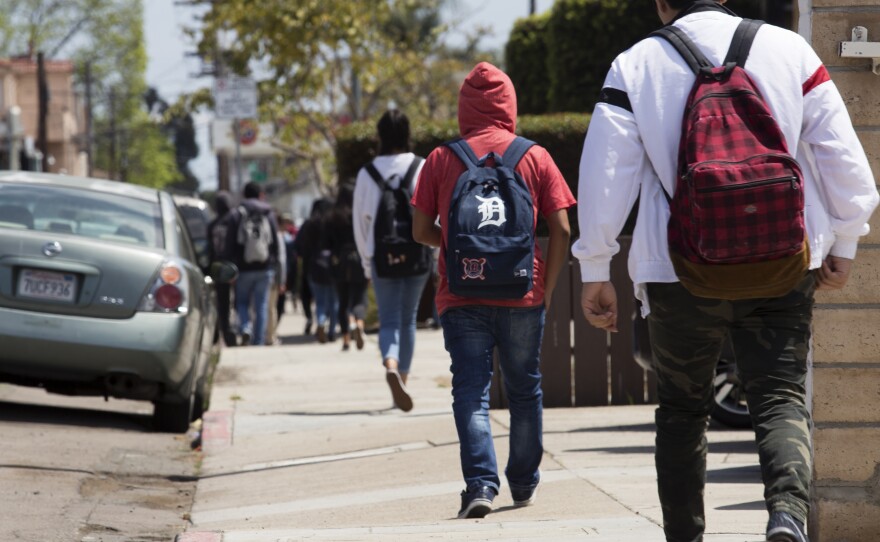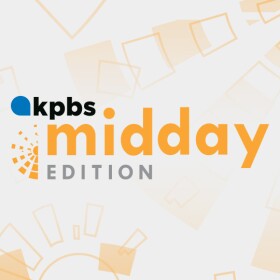Life would be much easier for Natalie La Rosa if schools reopened.
For the past six months, she’s been juggling raising two kids, teaching full-time at Smythe Elementary in the San Ysidro School District and serving as the president of the district’s teachers union.
But she says reopening schools in her neighborhood isn’t worth the risk. Smythe Elementary’s zip code has the greatest number of COVID-19 cases per 100,000 residents out of all the zip codes in San Diego County.
“Some of my students’ parents told me they’ve had it. A lot of people have told me some people close to them have died from it,” La Rosa said. “Once you know somebody, it’s more real to you.”
With the pandemic disproportionately impacting lower-income communities of color, dilemmas like the one facing Smythe Elementary are disturbingly common and not getting enough attention, say public health and civil rights experts.
Schools in the zip codes with the highest infection rates are more likely to serve more English learners, more students qualifying for free or reduced price meals and more students experiencing homelessness. While these students are far more vulnerable to learning loss than their counterparts in wealthier areas with lower case rates, their campuses will likely stay closed longer.
San Diego Unified, with more than 125,000 students, is the county’s largest district and spans zip codes with both some of the highest and lowest case numbers. Student populations and test scores vary just as widely.
This shows that the pandemic is exacerbating an on-going equity crisis in public education, the experts say.
“Long before this pandemic, we already knew that the zip code you lived in dictated the quality of education you received,” said Angelica Jongco, an attorney for the civil rights law firm Public Advocates. “While every child was guaranteed the right to attend a public school, the quality of education that every kid was getting wasn’t the same even before COVID-19 arrived.”
RELATED: San Diego Unified Students Start Year Facing Both Academic And Social Challenges
Consider two schools from two zip codes within San Diego Unified — Scripps Elementary in the northern part of the city and Porter Elementary in Southeast San Diego.
About 15% of Scripps' students qualify for free or reduced-price meals. Compare that to 95% of students at Porter. Porter also has about five times the percentage of English learners. Whereas Scripps served no students experiencing homelessness last year, about 9% of students at Porter were considered homeless.
A wide gap exists in test scores as well. About 85% of Scripps Elementary students met English Language Arts standards in 2019. About 25% met the same standards at Porter.
Yet, despite the greater need for in-person learning at Porter, it’s quite possible that it could remain closed while Scripps reopens.
“I think those conversations do come up and its a big worry for everybody,” said Howard Taras a pediatrics professor at UC San Diego and the consulting pediatrician for San Diego Unified. “Schools will hopefully not be the place where the disease will be transmitted.”
Chula Vista Elementary is another district with learning disparities and a disproportionately high number of COVID cases. Educators there tried over the summer to mitigate the disparities by offering a two-week virtual summer school session to vulnerable student groups. The program served about 2,000 students.
RELATED: Schools Remain Cautious Even As San Diego Moves Off State’s COVID-19 Monitoring List
“We were able to engage the community and have cohorts of children working with teachers in a virtual setting to help mitigate the loss and accelerate the learning,” said Matthew Tessier, an assistant superintendent at Chula Vista Elementary.
Chula Vista Elementary currently has no date set for reopening, but Tessier the plan will be based on local infection rates.
“We will be making a decision on opening based on our local data,” he said. “If Del Mar or La Jolla are not experiencing the rates that we are in South County, we wouldn’t make a decision based on countywide data.”
Experts like Jongco say that the state needs to better support districts like those in the southern parts of San Diego County to battle both the public health and educational inequities. Closing the digital divide by providing devices and WiFi to all students is just one example.
“A crisis doesn’t have to be our fate,” Jongco said. “What I do want to say is that this pandemic gives us an opportunity to actually upgrade our educational system to meet 21st century needs.”







